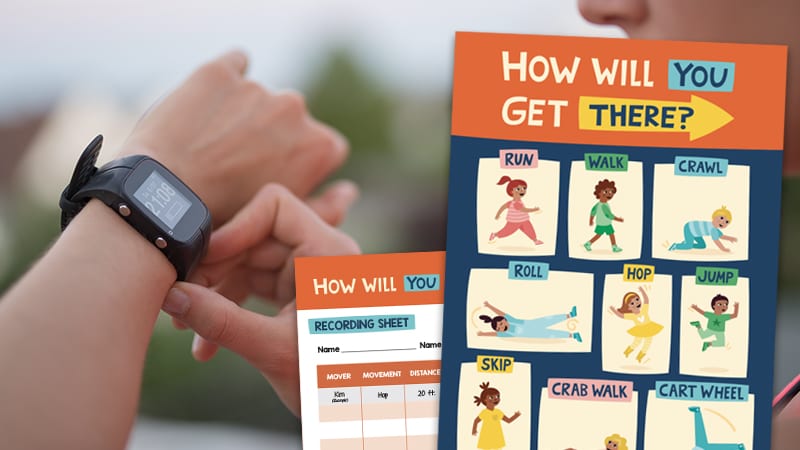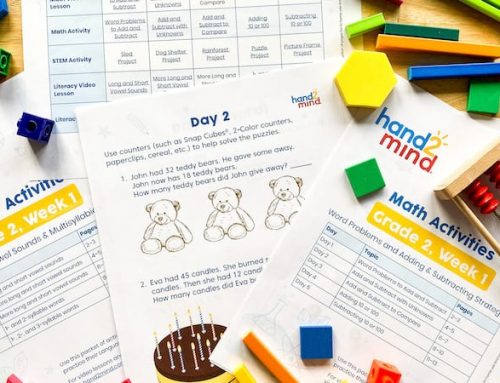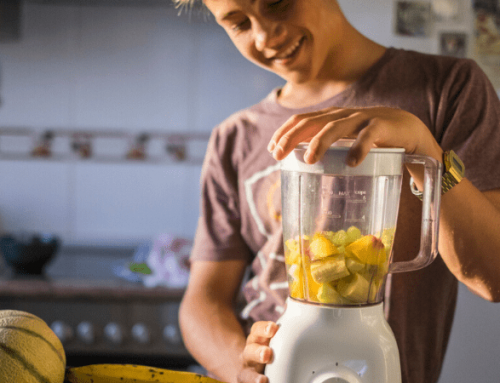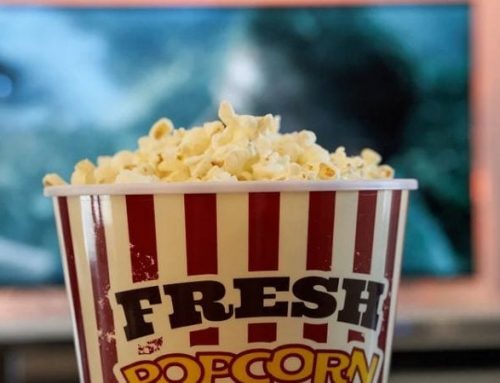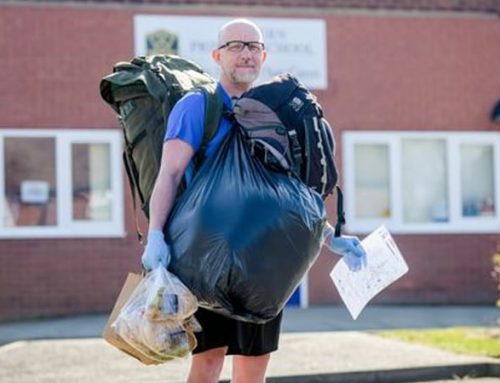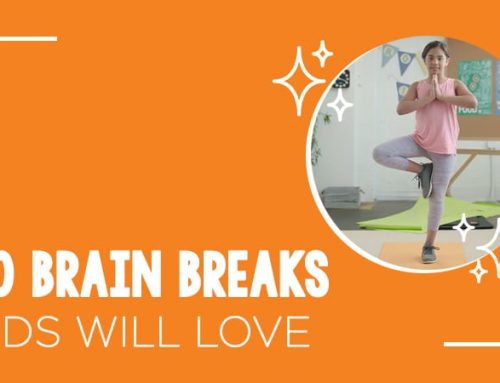Right now we’re all looking for creative ways to keep kids learning. And if they get them on their feet? Big bonus!
That’s why, together with our friends at STEM Supplies, we created this free printable math game called “How Will You Get There?” The game helps kids practice estimation, measurement, time and distance, and recording data.
To get your copy of the game and recording sheet, just submit your email here.
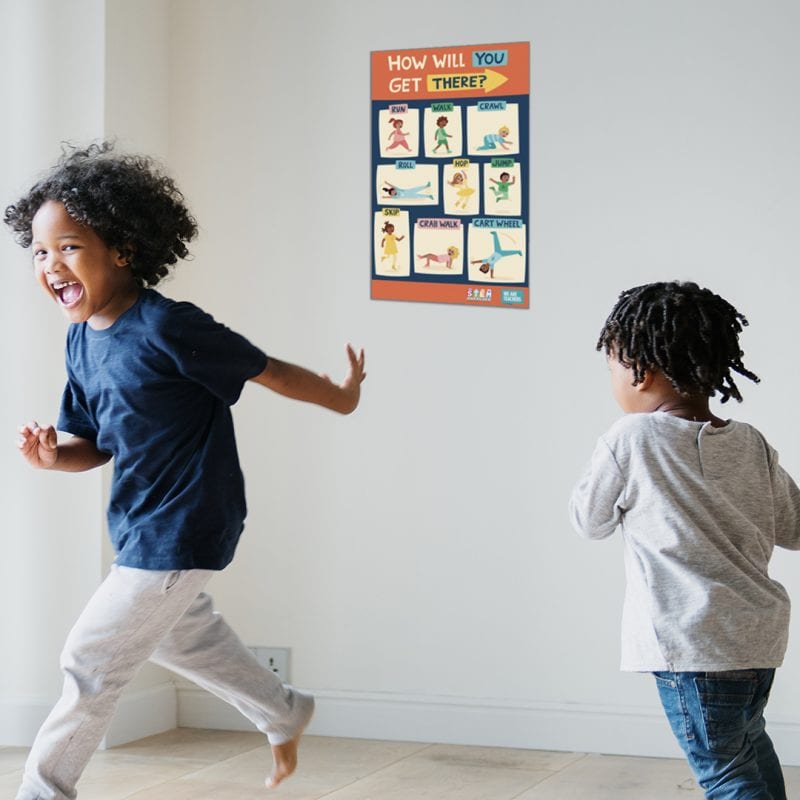
Here’s how you play
1. Choose a partner (a parent, caregiver, or sibling while we’re in quarantine!)
2. Mark a starting point on the floor using masking tape.
3. Using a measuring tape, measure the distance for movement and mark the stop point with masking tape.
4. Choose your first job: Recorder or Mover. You will take turns doing each.
5. From the downloadable poster, choose a way to move. For example, you may want to hop the distance.
6. Recorder gets a timer (use your watch, phone, or a free online timer), a recording sheet to share (also part of the free download), and a pencil. Recorder writes down the name of the Mover, the movement picked, and the distance.
7. Partners estimate how long they think it will take the Mover to cover that distance. Remember an estimate is a “thinking guess.” Recorder writes down the estimate on the recording sheet.
8. Mover lines up on the start line.
9. Recorder says, “Go!” and starts the timer. Mover moves from the start line to the stop line as fast as they can, using the chosen movement.
10. When Mover reaches the stop line, Recorder stops the timer and writes down the time it took to go from start to finish. Recorder then calculates and writes down the difference between the estimate and the actual time.
11. Switch jobs and play again. You can do the same move, and try to get faster, or choose a new move. You can even create your own moves!
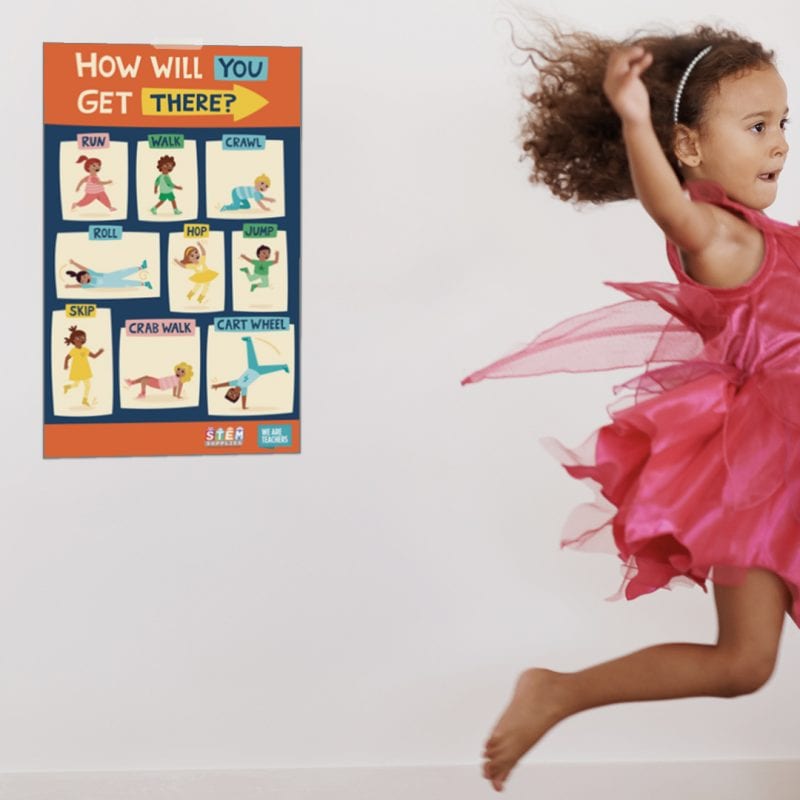
Game variations
Measurement
Students can measure the distance in inches, feet, and yards, or use metric units of centimeters and meters. Younger students can try non-standard measures like a sneaker or a book.
Movements
Featured movements from the poster can be used, adapted, or added to. For example, players might run forward the first time and run backwards the next time. Or they may choose to hop on one leg instead of a regular two-footed hop.
Timing
Since the distances will most likely be fairly short, most timing will involve seconds. For younger students who are unable to use a timing device, non-standard time measures such as rhythmic clap can be used with the Recorder counting how many claps it takes to cover a distance.
Estimation
Estimation helps build thinking skills and an understanding of the magnitude of a number. Help students understand that estimates are thinking guesses and are not expected to be exact.
Finding the difference
Finding the difference between an estimate and an actual measurement will usually involve comparing the numbers and using subtraction or “adding up.” Older players can even use positive and negative numbers here, with estimates that are below the actual time recorded with a minus sign for a negative difference and estimates that are higher with a plus sign for a positive difference.

